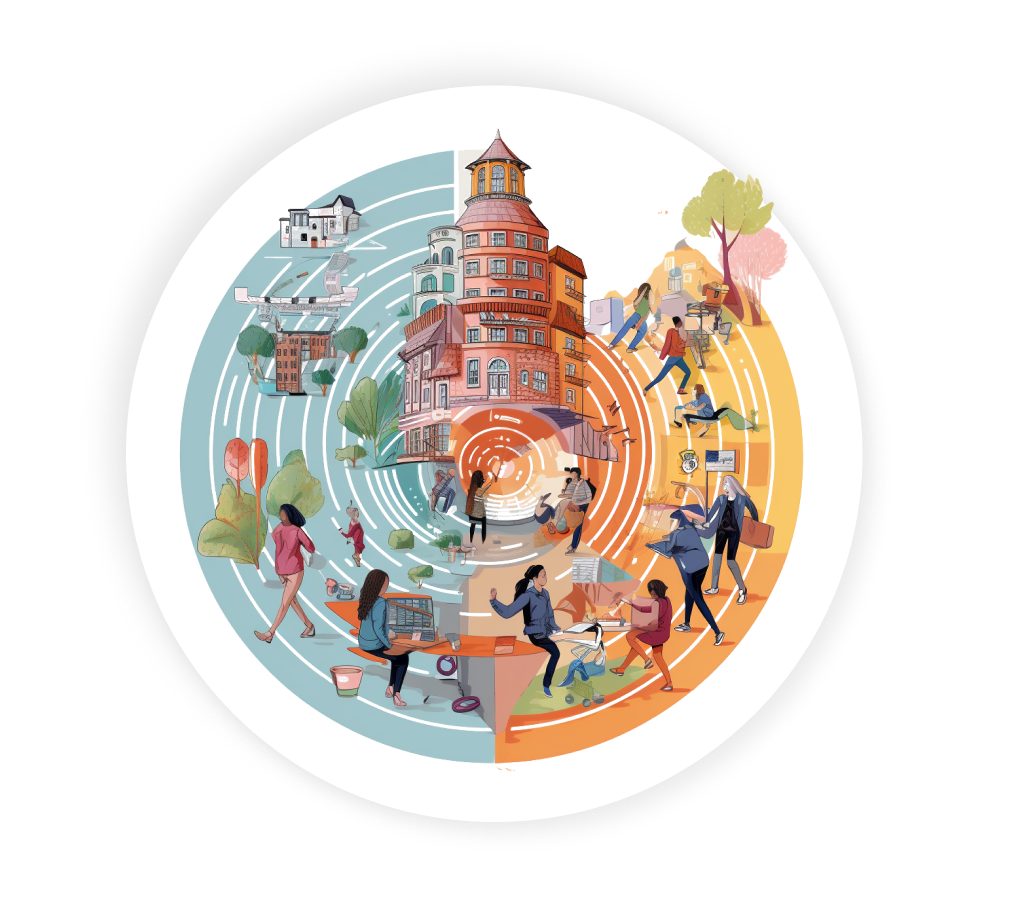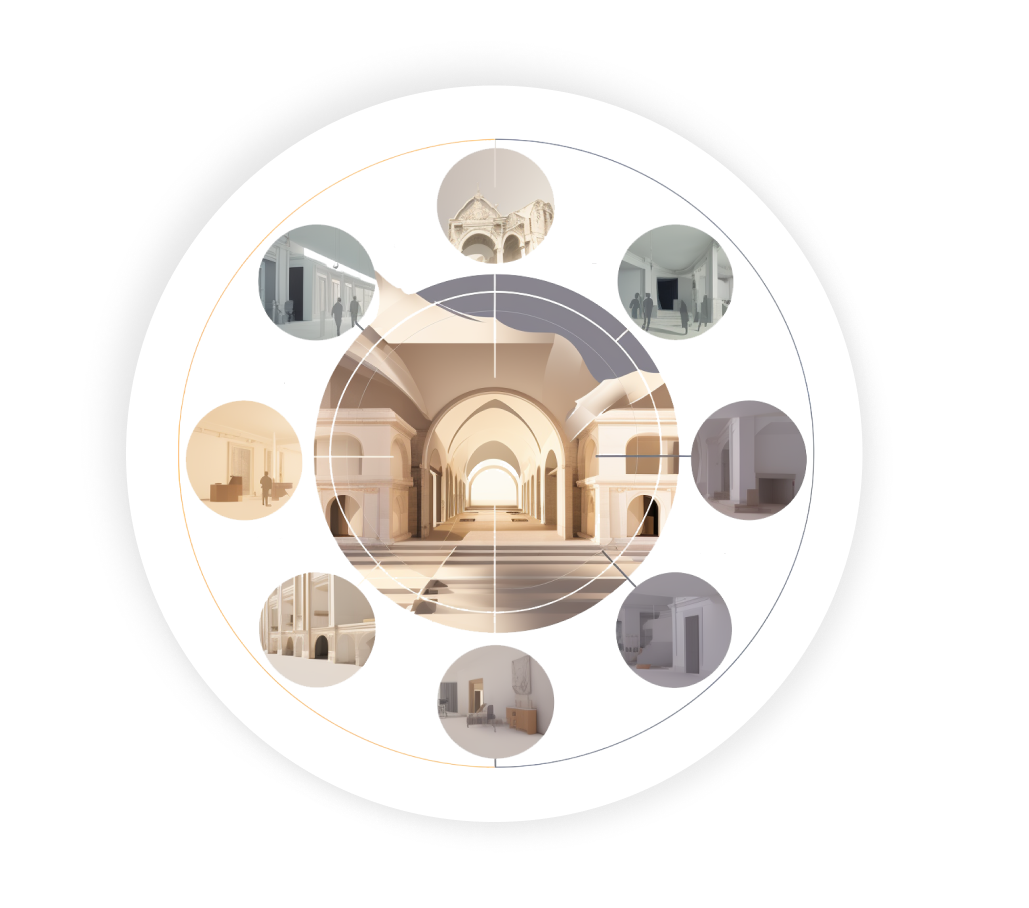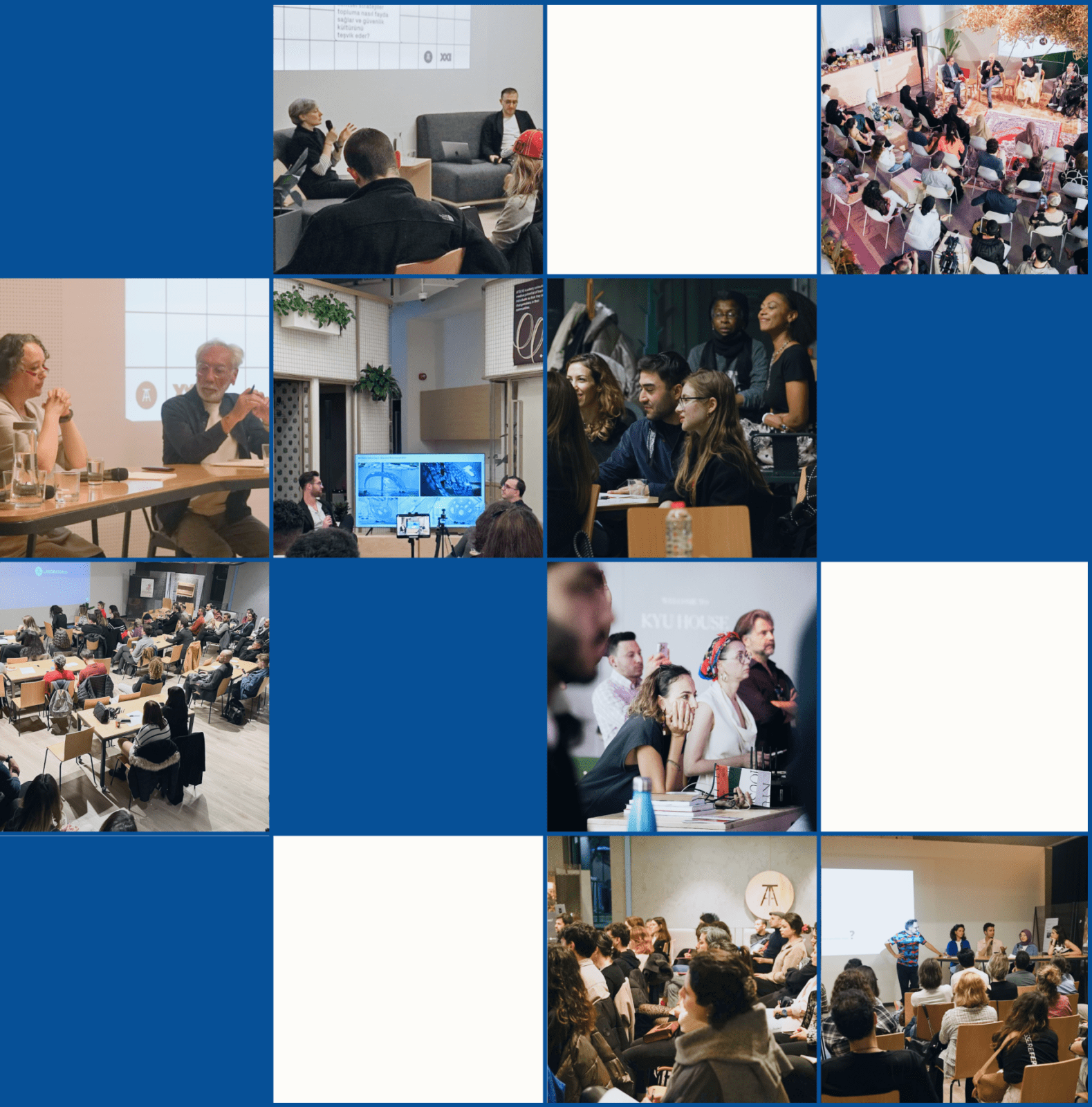Unfold Unveiled
Published in ATÖLYE Insights · 12 min read · March 5, 2024
Author: Ecem Çınar (Ecem Çınar) Editor: Nikkole Mojica
Design and architecture have the power to transform the world around us. From the buildings we live and work in, to the products we use every day, design and architecture shape our experiences, interactions, and environment. Unfold is an event series hosted by ATÖLYE Architecture and XXI, dedicated to exploring the process and power of design and architecture.
Looking back on Unfold from 2023, we embarked on an exciting journey exploring six fascinating themes. We learned how participatory urban strategies made our communities safer and why diversity mattered in architectural education. We dove into the impact of new tech on design, the partnership between research and architectural practice, and the delicate balance in conserving heritage. We also peeked into how AI could make our cities smarter. Throughout this journey, we were accompanied by cherished guest speakers and attendees at our hubs in Dubai and Istanbul, as we collectively navigated, learned, and envisioned a future where design and architecture foster innovation, inclusivity, and sustainability.

Here are some of the learnings we distilled from these conversations;
How can participatory urban strategies benefit citizens and promote a culture of safety?
In the first 2023 Unfold, Tülin Hadi, Istanbul Citizens' Assembly President, and TeCe Architecture's founding partner, joined us for an engaging discussion on participatory urban strategies. The conversation explored how involving citizens in decision-making benefits communities by enhancing safety, fostering community bonds, and improving city living. Moderated by Güray Oskay, Director of ATÖLYE Architecture, the talk also addressed the relevance of community involvement in urban planning, particularly its role in ensuring safety during emergencies.

01. Genuine participation goes beyond tokenism.
True participation involves collaborative decision-making, joint creation of public goods, and a sense of shared responsibility, that transcend token gestures. It's about fostering a sense of belonging and having a stake in the decision-making process.

02 Participation needs awareness and accountability.
Effective participation necessitates conscious, accountable individuals. Reluctance often stems from a lack of awareness or a sense of personal responsibility.
03 Fostering citizenship builds inclusive societies.
Councils should aim to foster citizenship, urban consciousness, and tolerance while monitoring progress in these areas, aiming for inclusive and informed societies.
04 Public spaces enhance community engagement.
Recognizing the significance of public spaces, initiatives aim to increase their number and improve accessibility, acknowledging their role in community engagement.
05 Empowering communities transcends spatial planning.
Historical instances highlight the significance of engaging communities beyond traditional spatial planning. Initiatives that promote infrastructure and social programs, such as those offering employment opportunities or ownership stakes, exemplify the multifaceted involvement of communities beyond spatial planning.
06 Community resilience begins at a grassroots level.
The Maraş earthquake emphasizes the crucial role of local organization and community building in disaster preparedness globally, highlighting the necessity to start at the grassroots level for resilience.
Why do we need diversity in architectural education?
2023's April Unfold event was a fascinating exploration of the importance of different modes of education in architecture.. Our three renowned guest scholars, Nevzat Sayın (NSMH), Prof. Dr. Tansel Korkmaz (İstanbul Kent University), and Sinan İzgi (AURA Istanbul), shared their perspectives on how different educational programs can help inform the way we think about design and architecture. We delved deeper into the process of Yahşibey Design Workshops, the establishment of Bilgi University's Master Program of Architecture, and into the operations of AURA Istanbul. It was an enriching discussion that shed light on shortcomings of conventional architectural education as well as exploration of progressive approaches.

07 Tradition informs contemporary urban architecture.
Architecture's main focus are urban concerns. We need to explore the lessons offered by tradition. Understanding the intersections between architectural tradition and contemporary urban challenges can unveil invaluable insights for interesting solutions.
08 Real-world immersion is vital for architectural education.
Architectural learning is all about diving into real challenges, connecting with communities, and exploring real spaces. To truly get modern architecture, you've got to understand where it all began - its classical roots. And when it comes to ancient architecture, there's no substitute for being on-site; classrooms aren't able to capture that ancient feeling quite the same way.
09 Standardization in education is a dangerous route, limiting context-driven design.
Standardizing architecture education overlooks the unique contexts and specific needs of each location, limiting the potential for creative and contextually relevant designs.
10 "Copy Left"' over copyright, advocate collaborative learning.
Learning doesn't happen solely from instructors but among peers; while educators serve as supportive facilitators. It's not about copyright but 'copy left' - an environment fostering mutual inspiration and shared learning. An open-studio ethos cultivates a transparent space where ideas flow freely without closed doors.
11 Feeling satisfied with your education might indicate its limitations.
If you're always content with your education, it might mean there's room for more. A truly fulfilling education embraces an ongoing desire for knowledge, growth, and innovation, sparking a perpetual journey of learning and improvement.
12 Life encounters are crucial for architectural growth.
In architecture, where life and human interactions are paramount, it is in the hands of students to create the diverse encounters that foster personal flourishing, transcending mere institutional settings.
How do emergent technologies transform the way we design?
Last May we engaged in a captivating exchange with Riyad Joucka, Lead Architect and Founder of MEAN* about emergent technologies and innovative design solutions to advance the future of our built environment. With Güray Oskay, they decoded how innovative design technologies, tech in space/construction, robotics, 3D printing, research, and built work act as interconnected streams within the design process.

13 Don't let your creativity suffocate with tool constraints.
Design tools often hinder creative thinking within their interfaces. For instance, the limitations of 2D CAD platforms limit the freedom of expression comparable to a blank sheet of paper.
14 AI stifles the creative journey's winding paths.
The contrast between AI's rapid generation of flawless images and the traditional architectural design process, which involves experimentation, errors, and considering numerous parameters, raises questions about the efficiency of AI-generated designs compared to the more iterative and organic nature of the human design process.
15 Innovations face a slow uptake within the realm of architecture.
Architecture traditionally resists rapid technology adoption. Despite 3D printing's maturity, its integration within architecture lags, reflecting the industry's slow assimilation to innovative tech.
16 Does the creator serve the AI's image or does the AI facilitate the creator's vision?
AI blurs the line between creator and tool, questioning whether one is serving the AI's generated image or if the AI is facilitating the creator's vision. Using AI to generate an image and then trying to produce it, the question arises: Are you serving the AI or is AI serving you?
17 Sustainability in architecture is a multifaceted task.
Sustainability in architecture is demanding architects to consider materials, construction, performance, and ethical sourcing, including the social implications. Prioritizing sustainability should be a universal focus.
18 Research-led architectural design sparks innovation.
Research-driven design in architecture is the bedrock of innovation, anchoring human-centered approaches. Harnessing technology's extensive reach, democratizes access to diverse insights and resources.
How does the interplay of research, conceptual frameworks, and design, shape an architectural practice?
Last June we welcomed SO? to talk about the interplay between research, conceptual frameworks, and design, shape SO?'s work. Specific focus was given to the recent project showcased at the 18th International Architecture Exhibition "Ghost Stories", and its connection to the broader context of architecture and intellectual production.

19 Architecture can question as much as it answers.
In the intersection of art and architecture, creating involves both asking questions like an artist and providing answers like an architect. Should architecture always answer, or can it solely question?
20 Never demolish, always transform. With and for the inhabitants.
Opting for transformation over demolition signifies a commitment to the community and its stories within spaces. By prioritizing the emotional connection and values residents associate with a place, architects can reshape projects with an insider's viewpoint, honoring the narrative of the space and its inhabitants.
21 Focusing on the stories behind spaces, rather than iconic architects.
Can we emphasize the stories behind spaces rather than iconic architects or structures? Is this a viable way to approach architecture? Evaluating buildings subjectively through the stories they tell us, irrespective of beauty or ugliness, is possible, whereas previously, renowned architects held the importance.
22 Neglected structures' stories rather than triumphs.
Architectural evolution prioritizes abandoned structures' narratives over success stories. Economic triggers have left many buildings unused, highlighting the need for transformation beyond spatial demands.
23 Equal opportunities through quality spaces.
It's essential for young people to have a good time without spending much. Inclusive and quality architecture can encourage citizens from varied financial backgrounds to enjoy and explore cities and their shared spaces. Narrowing the gap between rich and poor is tough, but cities should ensure quality shared spaces for everyone.
24 Stories can change our ideas about what architecture means and does.
We can change how we see beauty and usefulness in architecture by telling stories about it, rather than just thinking about its physical appearance. It challenges the usual ways we think about design and shows how stories can change our ideas about what architecture means and does.
Making without Disturbing the Aura: Boundaries of Architecture in Conservation
At the November Unfold, in a conversation with our guest Han Tümertekin, moderated by Tansel Korkmaz, we explored the premise of making without disturbing the aura. We looked into the dichotomy of architectural ego, where the balance between emphasizing personal design and respecting history was at the heart of the discussion. Recognizing the existing 'architecture' and unlocking its unrealized potential emerged as a pivotal theme, highlighting the intricate art of restoration.
The restoration journey of the Maiden Tower (Kız Kulesi) in Istanbul, a 2500-year-old relic, echoed the challenges and triumphs of preserving historical marvels amidst modern interventions. The conversation considered the complexities of navigating boundaries and fostering creativity within constraints.

25 Architecture blends preservation with change, deciding what to keep or enhance.
Whether building anew or renovating, architecture inherently encompasses preservation. Determining what to conserve, alter, or enhance remains a critical question in architectural practice.
26 Unveiling a building's essence by balancing preservation with unlocking potentials.
Understanding the essence of a building and allowing its potential to unfold requires balancing preservation with shedding light on untapped possibilities within the structure's shadows.
27 No architectural project is from scratch.
No architectural project begins with an empty slate. Even on vacant land, the design process starts with a wealth of constraining data, emphasizing that every project has parameters and contributing elements from its inception.
28 Creativity flourishes amidst constraints
Recognizing that creativity exists to push boundaries, imagining limitless projects is challenging.rue creativity isn't boundless fantasy but rather the ability to surpass limitations.
29 Intervening in ancient structures challenges the limits
Intervening in a structure like the centuries-old Maiden's Tower poses significant challenges. The complexity of such architectural interventions prompts questions about the limitations of intervention and innovation.
30 Preservation demands humility and respect.
Approaching a preservation project demands humility. In the face of a 2500-year-old structure, acknowledging the boundaries of one's capabilities becomes crucial, understanding that resolving architectural dilemmas demands respect for historical context and expertise.
Leveraging AI for smarter Urban Design
"How are we going to provide solutions that are inclusive and representative of different types of geographies...and how are we understanding the biases in AI tools?" These are just a few of the questions that we explored in our "Leveraging AI for Smarter Urban Design" panel on December 5th at kyu house, Dubai during #COP28 in collaboration with Gehl and the kyu Collective. The above question was asked by Claudia Dobles, just one of our amazing panelists of this session alongside Jeff Risom, Victor Santiago Pineda, and Liz Henderson moderated by Güray Oskay.

31 Cities: An Optimal Testing Ground to Explore AI's Impact on Our Lives
AI can bridge the understanding between humans, machines, and the environment, especially within cityscapes, aiding in comprehending interactions and shaping construction, urban planning, and environmental balance.
32 The representation gap might lead to biased outcomes.
The significant lack of representation in technology poses the risk of deeply biased outcomes. The ongoing tech evolution may perpetuate bias, highlighting the need for inclusive and diverse representation within data sets and algorithms.
33 Risk of amplifying "the wrong thing" faster and bigger.
AI's potential to exacerbate disparities calls for caution. Also, disadvantaged groups may lack the means to benefit from AI's capabilities, deepening societal gaps within and between nations and communities.
34 Could working with AI enable responsive urban growth?
Recognizing that creativity exists to push boundaries, imagining limitless projects is challenging. True creativity isn't boundless fantasy but rather the ability to surpass limitations.
35 Making AI useful by bringing data to the real world.
Intervening in a structure like the centuries-old Maiden's Tower poses significant challenges. The complexity of such architectural interventions prompts questions about the limitations of intervention and innovation.
36 Uniting the puzzle with each piece.
No single entity possesses the complete set of solutions. Successful transformation emerges from a harmonious blend of various groups - public, private sectors, designers, and policymakers. Collaboration is key to unlocking potential and understanding that every piece contributes to more comprehensive solutions.
So, what sort of insights do you have about design and architecture?
We'd love to hear of any innovative event or project you've been working on!
To find out more about our architectural design practices, please check out architecture.atolye.io or feel free to email me at ecem@atolye.io!
